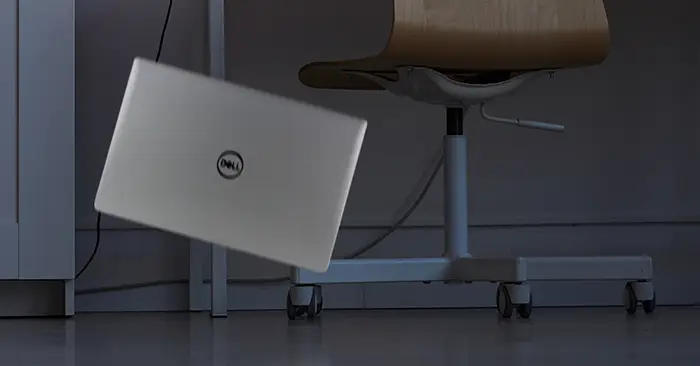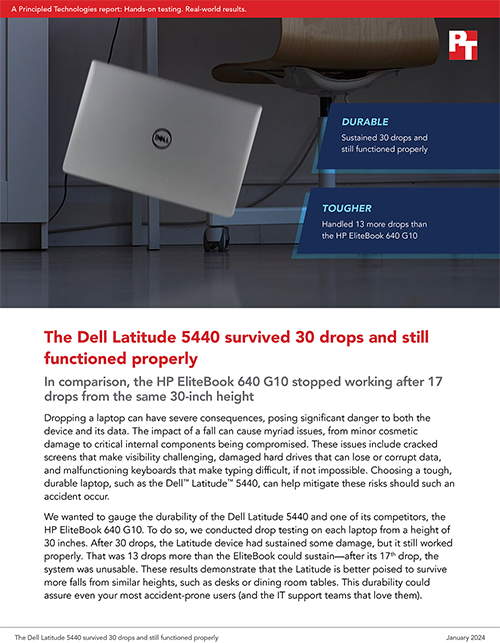
When it’s time to look for a new business laptop, most of us understandably pay attention to exciting tech specs like processor speed, memory amount, available storage, and display quality. However, one often-overlooked characteristic of a new laptop—physical durability—can play a vital role in protecting your data and ensuring smooth workflows down the road. If you’ve ever accidentally knocked your laptop off the table or heard a sickening thud when you dropped a bag after forgetting that your laptop was inside, you know how important it can be to have a system with the toughness to shake off common accidents.
We wanted to gauge the durability of a Dell Latitude 5440 and one of its competitors, an HP EliteBook 640 G10. One way to measure the physical durability of laptops is drop testing, so we used special equipment to perform a series of controlled drops of each laptop from a height of 30 inches, a common desk or table height. We planned the drops in sets of ten with each drop at a different orientation or angle and checked each laptop’s functionality after each drop. If a device still functioned properly after a set of ten drops, we moved on to the next set of ten. Once a device stopped functioning properly, we stopped dropping it. To collect a representative sample of each laptop’s durability, we planned to execute no more than 30 drops per device.
After 30 drops, the Latitude had sustained some damage, but it still worked properly. The EliteBook became unusable after 17 drops, when the display cracked and most of the screen went black.
Our results show that the Dell Latitude 5440 is more likely to withstand multiple falls from similar heights, like workstations or dining room tables. By choosing the more physically robust Dell Latitude 5440 over the HP EliteBook 640 G10, you could help reduce costly repairs and replacements associated with drops and falls while equipping your team for more uninterrupted productivity.
For more details about our Dell and HP laptop drop testing, check out the report below.
Principled Technologies is more than a name: Those two words power all we do. Our principles are our north star, determining the way we work with you, treat our staff, and run our business. And in every area, technologies drive our business, inspire us to innovate, and remind us that new approaches are always possible.






